Growing Alfalfa Sprouts at Home
How To Sprout Alfalfa Seeds At Home In Just 8 Steps
Alfalfa (Medicago sativa), a perennial plant, is known for its traditional medicinal and supplemental uses. However, you can also grow it as a sprout in your vegetable garden for a delicious and fresh meal addition. These small, flavorful plants are easy to cultivate at home. Follow our guide on how to sprout alfalfa seeds if you need help figuring out where to start. To grow alfalfa sprouts, you only need dried seeds, minimal indoor space, and no special equipment.
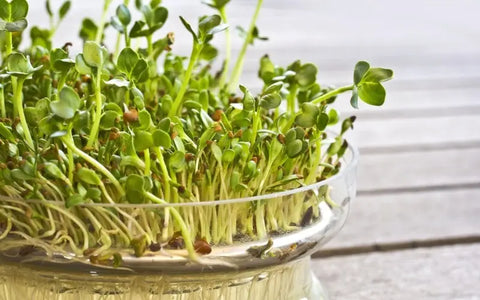
How To Sprout Alfalfa Seeds At Home In Just 8 Steps
1. What are alfalfa seeds used for?
2. How to sprout alfalfa seeds: Detailed instructions
2.1 How to sprout alfalfa seeds in a jar
2.2 How to sprout alfalfa seeds in a tray
3. Guides to using and storing alfalfa after sprouting
4. Conclusion
1. What are alfalfa seeds used for?
Alfalfa seeds are what you need to grow alfalfa, which is widely used as forage for grazing animals and livestock. Besides, Alfalfa sprouts, often considered a superfood, offer numerous dietary and health benefits, such as:
- Cholesterol improvement: Packed with natural antioxidants and enzymes, including the amino acid lysine, organic alfalfa sprouts may help reduce cholesterol levels and decrease the risk of heart disease.
- Nutrient-rich: Alfalfa sprouts are abundant in essential vitamins and minerals like magnesium, C, A, and K.
- Low-calorie: A cup of alfalfa sprouts contains a mere 10 calories.
So this plant is a great ingredient for salads in your home.
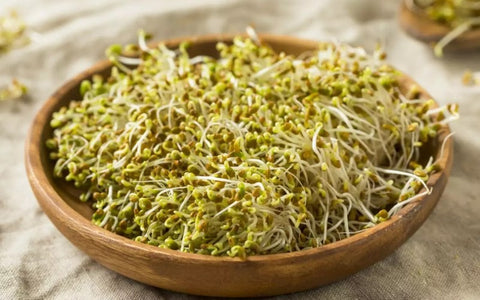
2. How to sprout alfalfa seeds: Detailed instructions
With these easy steps, you can grow alfalfa sprouts in three to five days. 1 tablespoon of seeds can be converted into 1/2 cup of sprouts in a glass container or small tray.
2.1 How to sprout alfalfa seeds in a jar
Here are the steps to germinate alfalfa seeds in glass jars at home.
- Purchase alfalfa seeds
Find alfalfa seeds at health food stores, feed stores, or online suppliers. For high-quality organic alfalfa seeds, consider visiting TheRike, where you can find various seasonal seeds for your garden.
- Take seeds
Use 1 tablespoon of seeds to yield approximately 1/2 cup of sprouts, sufficient for a meal or two. Adjust the number of seeds based on your needs. Store any remaining seeds in the original packaging or a sealable container.
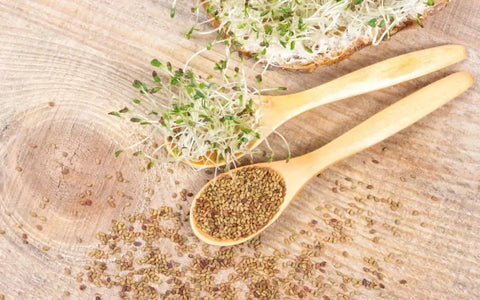
- Clean and sort the seeds
Place the preferred in a fine mesh sieve, thoroughly rinse them, and discard any damaged or discolored seeds.
- Transfer seeds to a glass jar
When placed on their side, flat-sided jars provide optimum air circulation. Cover the alfalfa seeds with 2 inches of cold water in the jar. Then, use a rubber band to secure a clean cloth or mesh fabric over the jar's opening. This will keep the seeds inside while allowing water drainage.
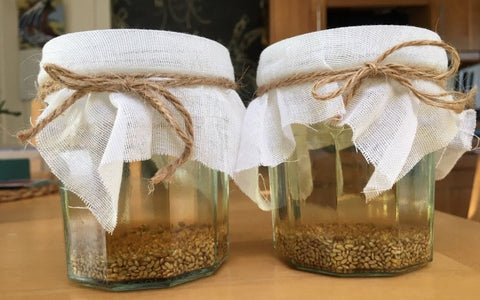
- Soak and drain alfalfa seeds
Place the jar in a warm, dry area and soak the seeds for at least 12 hours. Direct sunlight is not necessary for germination. After soaking, drain the water through the cheesecloth while keeping the seeds in the jar. Rinse and drain the seeds again, and ensure no excess water remains.
- Position the jar
Lay the jar on its side in a dark, warm location like a closet or pantry. Ensure the seeds are evenly distributed along the jar's base.
- Regularly rinse the seeds
Every 8 to 12 hours, rinse the seeds with warm water and drain. Continue this process for three to four days or until the sprouts reach a length of 1 to 2 inches.
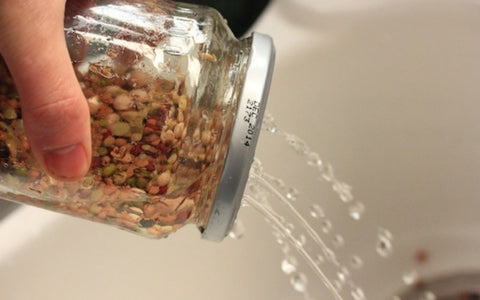
- Expose sprouts to sunlight
Arrange the sprouts in a thin layer on a plate or platter and place them in a sunny window for approximately 15 minutes. This activates essential enzymes, making the sprouts healthier. Once the sprouts turn green, they are ready to eat.
2.2 How to sprout alfalfa seeds in a tray
Grow alfalfa sprouts using a clay tray instead of a glass jar by following these steps:
- Measure alfalfa seeds
Use approximately 1/2 teaspoon of alfalfa seeds or more, depending on your needs.
- Clean, soak, and drain seeds
Rinse the seeds in a sieve, removing any damaged ones. Soak the seeds in a jar filled with cold water for at least 12 hours, covering the jar with a cheesecloth. Keep the jar in the darkroom during the soaking process. Drain the seeds through the cheesecloth afterward.
- Spread seeds on the clay tray
Use a tray like the one that comes with a red terracotta planter. Evenly distribute the seeds across the tray's base.
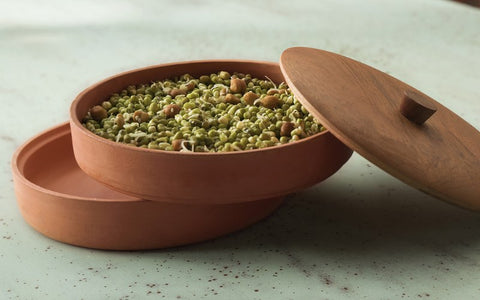
- Place the tray in a pan of water
Use a pan larger than the tray and fill it with water until it reaches halfway up the pan's side. Place the tray in the pan and keep both in the darkroom for germination.
- Refill the pan periodically
Check the water level every four to five days and refill as needed. The clay seeds tray will absorb water, keeping it moist for optimal germination.
- Expose sprouts to sunlight
When the sprouts reach 1 to 2 inches long, move the tray to a sunny window for about 15 minutes. The sprouts are ready to eat when they turn bright green.
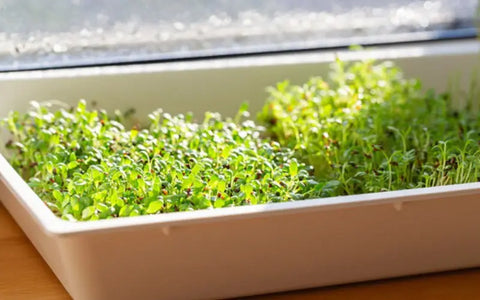
3. Guides to using and storing alfalfa after sprouting
Growing alfalfa sprouts in a clay tray is a simple alternative to using a glass jar. Once the sprouts have germinated, follow these steps to prepare, use, and store them.
Remove hulls: While hulls are edible, many people prefer to remove them. To do so, place the sprouts in a bowl of water and gently agitate them. The hulls will separate from the sprouts and float to the surface.
Incorporate alfalfa sprouts: Freshly washed alfalfa sprouts make a tasty addition to salads. Chop or tear the sprouts and mix them into your favorite salad recipes. They also work well as sandwich fillings, inside pita pockets, or topping for burritos with beans and rice.
Store alfalfa sprouts: style="font-weight: 400;"> After the final rinse, ensure the sprouts are completely dry to prevent rotting. Transfer the dried sprouts to a plastic bag and store them in the refrigerator.
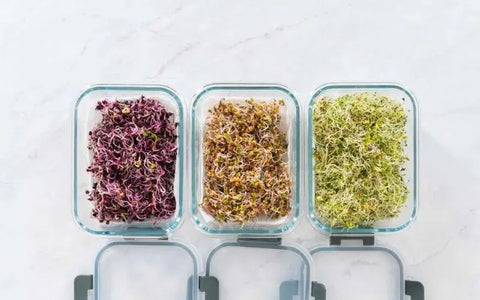
4. Conclusion
So, we have detailed instructions on how to sprout alfalfa seeds at home. You can change the steps if it doesn't affect the germination process. Although this is a guide to growing alfalfa, you can apply it to many other seeds like green pea, radish, etc. Buy seeds and experiment with growing them now!





Leave a comment